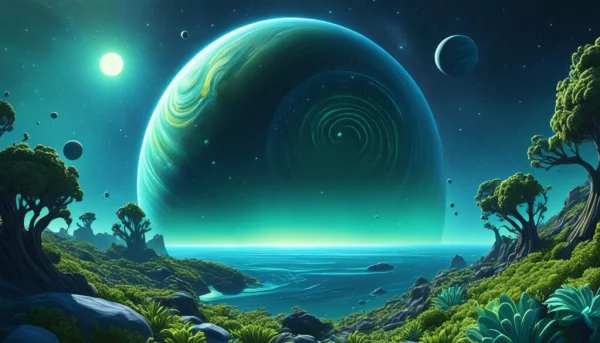Humanity has long dreamed of finding life beyond Earth and discovering new worlds. Identifying habitable planets is not only a scientific endeavor but also a beacon of hope for the future survival of our species. Researchers have developed specialized tools to assess this potential, such as the Earth Similarity Index (ESI) and the Planetary Habitability Index (PHI).
“The Earth Similarity Index (ESI) is designed to measure how closely planets resemble Earth, with a maximum score of 1.00. This enables scientists to focus on planets most likely to support life as we know it.” (As published in the journal Astrobiology, 2019). Within our Solar System, Mars scores 0.70 on the ESI, while Mercury scores 0.60. Beyond the Solar System, the exoplanet Gliese 581g reaches 0.89, making it the most Earth-like, according to an analysis released by an international research team.
While ESI focuses on Earth-like conditions, the PHI evaluates the potential for life forms unlike humans. This index examines surface conditions, atmosphere, and the potential for liquid water. “In the Solar System, Saturn’s moon Titan leads with a PHI score of 0.64, followed by Mars at 0.59 and Europa at 0.47.” (Report by NASA, 2021). Exoplanets such as Gliese 581g and Gliese 581d also score high, with respective scores of 0.49 and 0.43.

Beyond indices, advanced telescope technology like the James Webb Space Telescope has provided direct atmospheric data from exoplanets. For instance, James Webb recently detected traces of CO2 and methane on K2-18b, hinting at an environment potentially suitable for life. Moreover, missions like Voyager and Mars Rover have broadened our understanding of the Solar System, laying the groundwork for future explorations.
“Exploring exoplanets is not merely a scientific pursuit but a journey to redefine humanity’s place in the universe.” (Science Journal, 2023).
Based on early research findings, Gliese 581g stands as a prime candidate for the search for life. This stellar system comprises 4-5 planets orbiting a red dwarf star, creating conditions potentially supportive of life. However, current technological limitations make direct study of these planets a significant challenge.
With continuous advancements, the dream of discovering habitable distant worlds is no longer mere fiction. These initial steps in the journey are shaping the future of science and igniting new hope for life—not just on Earth but across the vast expanse of the cosmos.


HPX24h > Space > Habitable Exoplanets: Exploring Distant Worlds
Tagged Articles
The Smallest Star System with Three Exoplanets Found by NASA’s Kepler
Top Reads from This Category
Space
Scientists Believe Water Ice Could Exist on the Giant Asteroid Vesta
Space
Over 100 Billion Planets in the Milky Way: Astonishing Discoveries About the Universe
Space
The Smallest Star System with Three Exoplanets Found by NASA’s Kepler
Space
18 New Planets: Unlocking the Gateway to Exploring Giant Star Systems
Space
3D Lunar Map: A New Gateway to Understanding the Universe
Space
The Two Largest Black Holes Ever Discovered
Space
Could Our Universe Have Collided With Another Universe Billions of Years Ago?
Discover New Topics
Fitness
Why Do You Get Headaches After Exercise? Causes, Remedies, and Effective Prevention
Uncategorized
Why Do Experts Believe Alzheimer’s Is an Autoimmune Disease Rather Than a Brain Disorder?
Parenting Tips
Sleep Apnea in Preschoolers: Understanding It to Protect Your Child’s Health
Healthy Eating
The Comprehensive Guide to the 16:8 Intermittent Fasting Diet
Healthy Eating
Why Do We Need Fiber in Our Diet?
Healthy Eating
Types of Fats: Can Fats Be Good for You?
Health
Chemicals in Tattoo Ink: Are They Linked to Blood and Skin Cancer?
Science
Gold in the Human Body: A Scientific Look at the ‘Hidden Gold’ Inside You
Health
Fruits That Can Spike Blood Sugar Levels: Be Cautious
Animals
Can Maggots Heal Wounds Faster Than Surgery?
Healthy Eating
Moderate Coffee Consumption Helps Reduce the Risk of Diabetes and Cardiovascular Diseases
Animals
Secrets to Surviving Antarctic Freezing Cold Through RNA Editing
Healthy Eating
Effectively Lower Blood Pressure with 4 Common Kitchen Vegetables